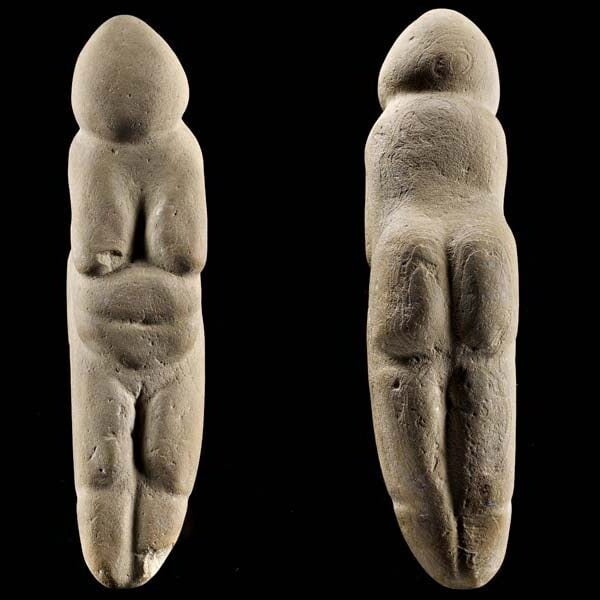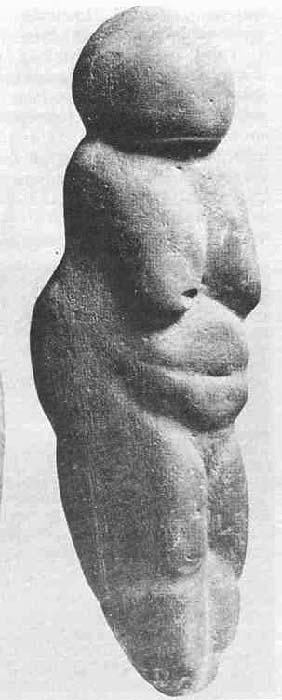It is a faceless female statuette found in 1940 in the Alboni quarries of Chiozza di Scandiano, near Reggio Emilia. She has a conical head with sagging shoulders and breasts, a round belly with a hole to highlight the navel, an incised vulva, round buttocks and legs joined at a point; her feet and arms are missing. The statuette was made on a yellowish fine-grained river sandstone pebble, a typical rock of the Apennines. It was originally attributed stylistically to the Upper Paleolithic, then to the Neolithic in reference to the nearby Neolithic settlement identified along the Secchia river. A further hypothesis put forward by the scholar Paolo Graziosi is that the statuette was found on the site as a secondary deposit, i.e. that the find, coming from older deposits, had been reused as an amulet or funeral equipment, which by the way does not represent a isolated case.


Historical notes
Found in the Alboni quarries of Chiozza di Scandiano on 11 September 1940 by the local historian, the Marquis Luigi de Buoi; it was found among the pebbles that the quarrymen threw on the edges of the clay quarries to be used for the manufacture of bricks in the adjacent kiln, therefore it was not possible to date the find exactly, as it was found out of context. After the discovery, Professor Laviosa Zambiotti was entrusted with the excavation and Prof. Graziosi with the study of the statuette. The site has been the subject of further excavations, made known for significant funerary evidence. All the material is kept in the Museum of Reggio Emilia.
CARD
LATEST PUBLISHED TEXTS
VISIT THE FACTSHEETS BY OBJECT

